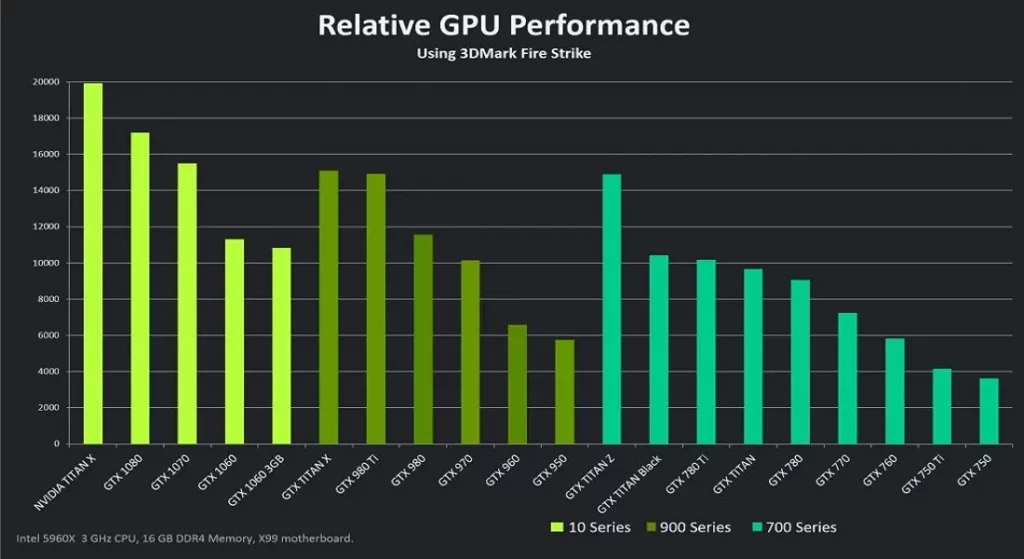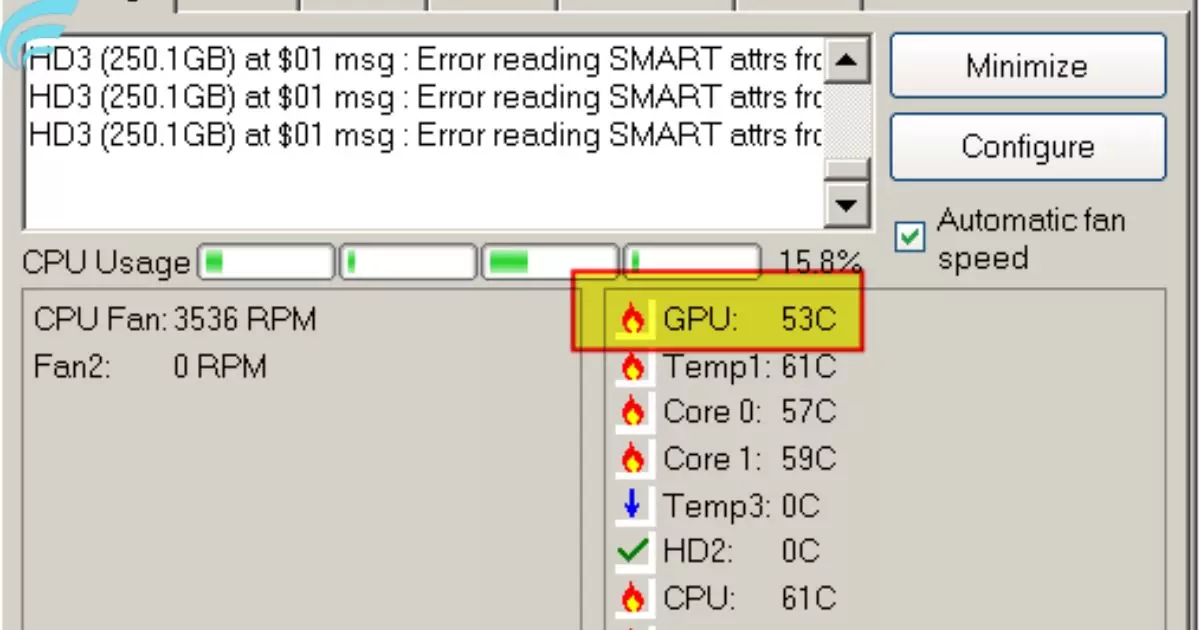A 53°C GPU temperature means the graphics card is operating at a temperature of 53 degrees Celsius. In simple terms, it indicates the level of heat the GPU is producing during use. This temperature is generally considered normal and within a safe range for many graphics cards. Monitoring GPU temperature helps ensure it doesn’t get too hot, which can affect performance and longevity.
Curious about your graphics card’s well-being? Ever wondered: Is 53°C GPU temp good? Dive in to discover why this temperature might be just right for optimal performance. Your GPU’s health matters, and understanding the significance of its temperature can elevate your computing experience. Let’s unravel the mystery and ensure your graphics card is cruising comfortably at the ideal temperature.
A 53°C GPU temperature is generally considered good and within a safe range for most graphics cards. This moderate temperature ensures efficient performance without risking overheating. Monitoring your GPU temperature is crucial to maintaining optimal functionality and preventing potential issues. So, if your graphics card hovers around 53°C, rest assured, it’s likely in a healthy operating range.
Normal Operating Temperatures
Graphics processing units (GPUs) play a crucial role in powering our computers, and understanding their normal operating temperatures is key to ensuring optimal performance. The typical range for GPU temperatures varies between models, but it generally falls within 30°C to 85°C. It’s important to note that different GPUs may have different baseline temperatures, and what’s normal for one may differ for another.
When evaluating the normal operating temperatures, consider the specific GPU model you own. For example, mid-range GPUs may have a different baseline temperature than high-end gaming GPUs. This understanding helps you establish a benchmark for what is considered normal for your particular graphics card.
Is 53°C good for a GPU?
A GPU temperature of 53°C is generally considered good and falls comfortably within the safe operating range for most graphics cards. This moderate temperature not only ensures efficient performance but also prevents the GPU from getting too hot, which can lead to performance issues and potential long-term damage.
To put it in perspective, temperatures around 53°C indicate that your GPU is operating optimally without being under excessive stress. This balance between effective cooling and performance is crucial for a smooth computing experience, especially during graphics-intensive tasks such as gaming or video editing.
Now, if you’re considering how to switch from Nvidia to AMD GPU, it’s essential to ensure a seamless transition, maintaining this delicate equilibrium for an enhanced graphics experience.
Effects of Temperature on GPU Performance

The temperature of your GPU can significantly impact its performance. When a GPU operates within its normal temperature range, it functions optimally, delivering the expected speed and efficiency. However, if the temperature exceeds the safe limit, it can lead to thermal throttling, causing the GPU to reduce its performance to prevent overheating.
This reduction in performance can manifest as lower frame rates and an overall decrease in system responsiveness. Maintaining an optimal temperature, such as the mentioned 53°C, is essential to harnessing the full capabilities of your GPU and avoiding potential performance bottlenecks.
Table: GPU Temperature Ranges
| GPU Model | Normal Operating Range |
| Nvidia GTX 10xx | 30°C to 85°C |
| AMD Radeon RX | 40°C to 90°C |
| Nvidia RTX 20xx | 30°C to 88°C |
Monitoring and Controlling GPU Temperature

To maintain your GPU within the desired temperature range, active monitoring and, if necessary, temperature control are essential. Utilizing software tools provided by GPU manufacturers or third-party applications allows you to keep tabs on the temperature in real-time. Adjusting fan speeds, optimizing case airflow, and considering additional cooling solutions are effective ways to maintain a stable and desirable GPU temperature.
Monitoring your GPU temperature is not only about ensuring it stays within a safe range but also about optimizing its performance. Different tasks, such as gaming or video editing, may generate varying levels of heat. Adjusting fan speeds or tweaking GPU settings based on your usage patterns can help strike the right balance between efficient performance and temperature control.
Considerations for Different GPUs
Different GPU models may have varying temperature tolerances, and it’s crucial to consider these differences when evaluating what is ‘good’ for a specific graphics card. For instance, high-end gaming GPUs might have higher normal operating temperatures compared to entry-level models. Understanding the specific requirements of your GPU ensures you can tailor your cooling setup to maintain an optimal temperature for consistent performance.
Consideration for different GPUs goes beyond just the brand; it extends to the specific model and its intended use. Gaming GPUs, such as the Nvidia GTX 10xx series or the AMD Radeon RX series, are designed to handle more demanding tasks, and their normal operating temperatures reflect this. On the other hand, entry-level or integrated GPUs may have lower normal operating temperatures, making them suitable for less demanding applications.
Common Questions and Myths
Addressing common questions and dispelling myths around GPU temperatures is vital for a comprehensive understanding. Questions like Is 53°C GPU Temp Good? are common among users seeking reassurance about their graphics card’s health. Dispelling myths, such as the belief that lower temperatures always translate to better performance, helps users make informed decisions about managing their GPU temperature without unnecessary concerns.
One common myth is the belief that lower temperatures always lead to better performance. While it’s essential to keep your GPU within a safe operating range, excessively low temperatures can sometimes be counterproductive.
Some GPUs are designed to operate optimally within a specific temperature range, and maintaining temperatures too far below this range may not provide any additional benefits. Understanding the nuances of GPU temperatures helps users make informed decisions about optimizing their system for both performance and longevity.
FAQs
What does a GPU temperature of 53°C indicate?
A GPU temperature of 53°C typically suggests that the graphics card is operating within a normal and acceptable temperature range.
Is 53°C considered a safe temperature for a GPU?
Yes, 53°C is generally considered safe for a GPU. It falls within the normal operating temperature range for many graphics cards.
Can a GPU temperature of 53°C affect performance?
A temperature of 53°C is unlikely to negatively impact GPU performance. It is within the optimal range for efficient and stable operation.
Should I take any action if my GPU reaches 53°C?
No immediate action is necessary at 53°C. However, it’s good practice to monitor temperatures and ensure they stay within the recommended range for prolonged optimal performance.
Are there variations in the acceptable temperature range for different GPUs?
Yes, the acceptable temperature range can vary among different GPU models. It’s advisable to check the specific recommendations for your graphics card to ensure optimal performance.
Conclusion
In a nutshell, a GPU temperature of 53°C is more than just good; it’s ideal. Picture it as the perfect climate for your graphics card, ensuring it functions at its peak without breaking a sweat. This temperature sweet spot means your GPU is neither too chilly nor too hot, akin to maintaining a comfortable room temperature. It’s the Goldilocks scenario for your computer, fostering optimal performance and longevity.
With a GPU cruising at 53°C, you’re in the zone for seamless gaming, swift video editing, and overall efficient operation. So, when it comes to the question, Is 53°C GPU temp good? The answer is a resounding yes. Your graphics card is happily humming along, ready for whatever visual adventures lie ahead.











